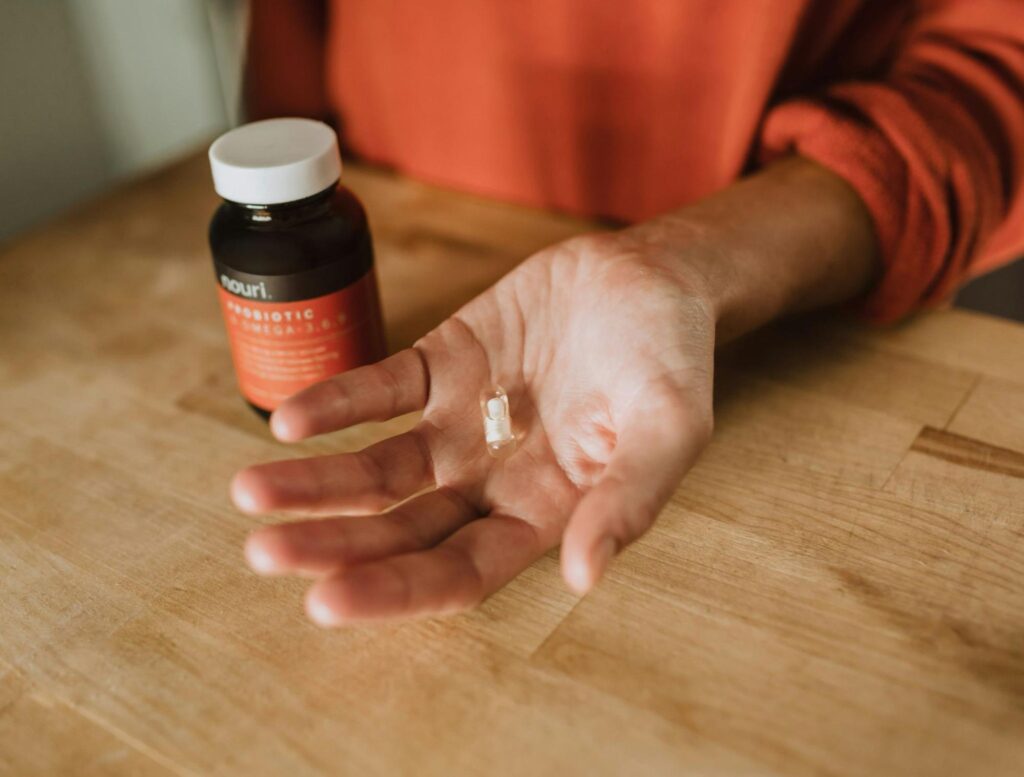The breakdown and metabolization of body fat accumulated to provide energy is known as fat burning. Effective fat burning is crucial for general health and wellness for some reasons:
Weight management: Reducing extra body weight and keeping it off over time requires burning fat. Excess body fat, particularly in the belly, raises the risk of heart disease and type 2 diabetes, among other chronic conditions.
Decreased inflammation: The system becomes inflamed when fat cells create too many inflammatory chemicals. Fat burning contributes to a decrease in inflammation.
Better metabolic health: The metabolism of fat is crucial to the metabolic processes that regulate cholesterol and blood sugar. Metabolic health indices can be improved by increasing fat burning.
Increased energy – The body uses body fat to store energy. Compared to burning sugar, burning fat increases available energy.
Hormone production: Hormones produced by fat cells control functions such as hunger and fat storage. For optimum health, burning fat helps balance these hormones.
Improved body composition: You can see more muscle definition and a more toned body when you burn a considerable amount of fat.
This article’s remaining sections will offer evidence-based techniques for maximizing fat burning safely and efficiently to promote improved health. Learn effective ways how to lose body fat and reduce body fat percentage while enhancing overall well-being.
10 Best Ways to Burn Fat
1. Dietary Changes

You must have a calorie deficit to burn fat. This implies that you must eat fewer calories per day than you expend. The following eating advice can help you achieve a calorie deficit:
Reduce Calories
- Reduce portion sizes of meals and snacks. Use smaller plates, bowls, and utensils.
- Limit calorie-dense foods like fried foods, sugary drinks, desserts, etc.
- Fill on low-calorie foods like fruits, vegetables, whole grains, and lean proteins.
- Track calories with an app or food journal to stay within your daily calorie target. Reduce calories gradually for sustainable weight loss.
Macro Nutrient Composition
- Focus on getting adequate protein – around 0.5-1g per pound of body weight. Protein is satiating and helps retain muscle while losing fat.
- Moderate carbohydrates based on activity levels. Reduce excess refined carbs and sugars.
- Include healthy fats like avocado, nuts, seeds, and olive oil. They support fat loss when calories are controlled.
Meal Frequency
- Avoid extended fasts between meals. This can lead to overeating later.
- Eat about 4-6 small meals spaced out during the day. Keeps you full and prevents blood sugar spikes.
- Don’t go longer than 3-4 hours without eating. Time meals before and after workouts.
The secret to losing weight is to modify your diet to control calories and macronutrients. Aim for entire, nutrient-dense foods to meet your calorie target while getting adequate protein, carbohydrates, and healthy fats.
2. Increase Physical Activity

For weight loss and fat burning, frequent physical exercise is necessary. Engaging in physical activity increases your metabolism and aids in calorie burning, allowing you to burn calories longer after your workout. Additionally, it improves muscular mass, which boosts metabolism even more.
Cardiovascular exercises that increase calorie burn throughout the activity include swimming, cycling, and running. Try to get in at least 150 or 75 minutes of moderate intense exercise per week.
Your heart rate should rise to 50–70% of your maximum heart rate during moderate activity and 70–85% during strenuous exercise. Longer steady-state cardio or shorter high-intensity interval training (HIIT) sessions can be used to achieve this.
Another important thing is strength training. Gaining muscle through weightlifting increases your body’s daily calorie burn. Try to do two or more full-body strength training sessions per week.
Pick a weight that is so heavy that you can only perform 8–12 repetitions in a set of two to three sets. Complex exercises targeting numerous big muscular groups simultaneously include squats, deadlifts, and chest presses.
Lifting weights and engaging in resistance training and aerobic activity are critical for fat loss and sculpting a lean body. While swimming, cycling, and running are great ways to burn calories, strength training has distinct advantages that help with long-term fat reduction.
Resistance exercise not only helps you gain muscle mass, but it also helps you lose visceral fat. Squats, deadlifts, and chest presses challenge your muscles and drive muscular growth while increasing your body’s calorie consumption.
Losing fat and avoiding injuries can be achieved by concentrating on good technique and progressively increasing weight or intensity over time. Seeing benefits from strength and cardio training requires consistency.
3. Prioritize Sleep

For efficient fat burn, getting adequate, good-quality sleep is essential. Your body creates more of the stress hormone cortisol when you don’t get enough sleep, which tells your body to store fat instead of burning it.
Hormones that regulate appetite are also upset by sleep deprivation, which increases the desire for unhealthy, high-fat, and sugar meals. When you lack sleep, your body produces more of the hormone ghrelin, which increases hunger.
The hormone that reduces hunger, leptin, also falls simultaneously. Combining these two causes overeating.
In addition, fatigue diminishes the desire to work out and the ability to regulate one’s eating habits. It is considerably more difficult to restrict calorie or maintain a fitness regimen while fatigued.
Adults can achieve ideal body composition and overall health by aiming for 7-9 hours of sleep every night. Prioritize your sleep by forming healthy sleeping habits. Stick to a consistent sleep schedule, minimize screen time before bed, avoid caffeine late in the day, and build a calming bedtime routine.
Getting enough sleep guarantees that your body can burn fat continuously through hunger control, a healthy metabolism, and muscle repair after exercise.
4. Manage Stress
Stress impacts hormones, promoting fat accumulation, particularly around the stomach. Stress causes the release of the hormone cortisol, and prolonged high cortisol levels can enhance hunger and encourage fat buildup in the abdomen.
Our bodies slow down vital functions like digestion and metabolism when stressed because they believe we are in a fight-or-flight situation.
Numerous methods exist to reduce cortisol levels and ease stress:
- Meditation and mindfulness – Taking just 5-10 minutes a day to quiet the mind has been shown to reduce cortisol levels. Apps like Calm provide great guided meditations.
- Yoga and breathing exercises – Gentle yoga poses and pranayama breathing exercises help relax the body and mind. Yoga decreases cortisol while also building strength.
- Get adequate sleep – Not getting enough quality sleep can impair hormone regulation. Strive for 7-9 hours per night. Develop a relaxing pre-bed routine.
- Listen to music – Soothing music has a direct effect on cortisol. Create playlists for relaxing or focusing.
- ** Laugh!** – Laughter truly is good medicine. Seek out humorous videos, funny podcasts, or comedy shows. Laughter decreases cortisol.
- Spend time in nature – Being outdoors and away from technology, even briefly, can relieve stress. Go for walks, hike, or sit outside.
- Social connection – Loneliness can increase cortisol. Spend quality time with supportive friends and family to lower stress.
We may contribute to maintaining healthy cortisol levels by including stress-relieving activities in our daily routines. The body starts burning fat as a result of this.
5. Supplements
Some pills can help you burn more fat and speed up your metabolism. Among the best supplements are the following:
- Protein powders: Getting enough protein helps maintain and even build muscle mass. Higher muscle mass leads to a faster metabolism. Whey and casein protein powders are ideal for supporting metabolism and satiety. Aim for 20-30g of protein per meal.
- Caffeine: Caffeine is a stimulant that can boost metabolism by up to 11%. It helps mobilize fatty acids and causes fat cells to break down body fat. Aim for 200-400mg of caffeine per day spread out in 2-3 doses. Drink caffeine 30-60 minutes before exercise for maximum effect.
- Green tea extract contains caffeine and EGCG, a powerful antioxidant. EGCG can increase fat burning, particularly during exercise. Take 250-500mg green tea extract standardized for 45% EGCG.
Supplements, including synephrine, CLA, and capsaicin are also helpful. But the best foods for maximizing the potential for burning fat are usually those high in protein, caffeine, and green tea. Incorporating dietary, activity, and lifestyle modifications with supplements is ideal. Before starting any new supplements, speak with your physician.
6. Drinking Coffee

Coffee is a popular beverage enjoyed worldwide. But its benefits don’t stop with its rich, fragrant flavor or capacity to wake us up in the morning. Drinking coffee can have a huge positive impact on your weight reduction journey.
Caffeine in coffee functions as a central nervous system stimulant, raising metabolic rate and offering a temporary increase in energy levels. In essence, metabolism is the process by which your body turns the food you consume into energy. As a result, the higher your metabolic rate, the more effectively your body can burn calories.
7. Intermittent Fasting
The eating pattern known as intermittent fasting (IF) alternates between times when one fasts and times when one eats. In recent years, it has gained a lot of popularity as a weight loss method.
There are several variations of intermittent fasting, such as:
- The 16/8 method – This involves fasting for 16 hours per day and restricting eating to an 8-hour window. For example, skipping breakfast and eating between 12 pm-8 pm.
- 5:2 diet – This method involves eating normally 5 days per week, then restricting calories to 500-600 per day for 2 days per week.
- Alternate day fasting – Fasting every other day, limiting calories to about 25% of normal needs on fast days.
- The Warrior Diet – Eating small amounts of raw fruits and vegetables during the day, then one huge meal at night.
Several studies have demonstrated intermittent fasting to be a successful weight-loss technique. Some advantages include of:
- Lowers insulin levels and increases insulin sensitivity. This can aid fat burning.
- Increases human growth hormone production. Higher levels are linked to fat loss.
- Suppresses appetite due to lower insulin and ghrelin levels. This makes it easier to restrict calories.
- Enhances fat-burning and preserves muscle mass when coupled with exercise.
- Improves cardiovascular risk factors like blood pressure and triglycerides.
It’s critical to adhere to optimal practices for intermittent fasting for it to be most beneficial for weight loss:
- Stick to a consistent fasting schedule and fast for at least 16 hours daily.
- Focus on nutritious, low-calorie foods during the eating window.
- Stay hydrated with water, and avoid high-calorie beverages.
- Combine fasting with exercise for the best fat-burning results.
- Pay attention to hunger cues and stop fasting if feeling ill or fatigued.
- Speak with a doctor first if you have any medical conditions.
All things considered when done correctly, intermittent fasting can be a long-term, sustainable strategy for weight loss. It functions with the body’s natural metabolic cycles and promotes mindful eating practices.
8. Adding Probiotics to Your Diet

Study shows that probiotics help lose weight by improving the body’s fat-burning systems. For starters, they reduce dietary fat absorption, increase fat excretion through stool, and make you feel fuller for longer by boosting the production of the satiety-inducing hormone GLP-1.
Furthermore, probiotics can help prevent and cure inflammation frequently related to obesity.
9. HIIT Workouts
High-intensity interval training, or HIIT, is one of the best fat-burning strategies. Short, intense workouts are interspersed with rest or less extreme activity during high-intensity interval training (HIIT). Interval exercise of this kind maximizes the burning of calories and fat.
Here are a few fantastic HIIT exercises to try:
- Tabata: This involves 20 seconds of max effort, followed by 10 seconds of rest. Repeat for 4-8 cycles. You can do Tabata with different exercises like sprints, jump rope, burpees, or kettlebell swings. Aim for 4-5 Tabata workouts per week.
- Sprint intervals: Sprint as fast as possible for 30-60 seconds and walk for 60-90 seconds. Repeat for 10-15 rounds. Do 3 sprint workouts per week.
- Stair circuits: Run upstairs or do exercises like jump squats for 30-60 seconds, and walk back down to recover for 30 seconds. Repeat 10 times. Aim for 2 stair circuit workouts per week.
- Rowing intervals: Row hard for 250 meters, and rest for 90 seconds. Repeat for a 3-5km total distance.
- Cycling intervals: Bike fast against high resistance for 30-90 seconds, followed by slow, easy spinning for 30-90 seconds. Repeat 10-20 times.
The secret is to give it your best during the high-intensity intervals and recover completely during the rest times. As you gain fitness, gradually extend the intervals’ duration. HIIT two to four times a week will increase fat burning dramatically.
10. Accountability and Tracking
Monitoring your exercise, macronutrient intake, and calorie intake may be quite helpful for losing weight. Regular tracking of these measurements gives you important insights into your behaviors and your body’s reactions.
Among the advantages of tracking are:
- Greater awareness of what and how much you’re eating. Tracking macros and calories makes you more conscious of your food choices.
- Understanding your calorie intake needs. Tracking over time helps determine the optimal daily calorie amount for your goals.
- Improved accountability. Knowing you must log everything you eat keeps you focused and honest with your diet.
- Identifying issues and trends. Tracking consistently can reveal where you may be going wrong, like not eating enough protein or overconsuming calories on weekends.
- Motivation from progress. Seeing your tracked calories and macros hit target ranges provides a sense of accomplishment.
- Ability to make adjustments. If fat loss stalls, tracking data shows where changes may be needed, like lowering calories or doing more cardio.
- Optimizing nutrition for workouts. Tracking ensures you get adequate nutrition to fuel your training and recover properly.
Although it requires work, regular tracking provides priceless data. Software like MyFitnessPal makes monitoring calories, macros, and activity straightforward. Your fat reduction outcomes might be accelerated by devoting time to tracking.
If you enjoyed this article, you may also want to read this article on 10 Effective Strategies to Lose 50 Pounds in a Month.
*This information is not intended to serve as a substitute for professional medical or dietary advice tailored to individual needs.
Dr. Nicolette Natale is a physician, with a background in Psychology, General Medicine, and English Literature, combining her expertise to provide readers with the most accurate, easy-to-understand, and comprehensive information regarding healthcare. She received her Doctorate in Osteopathic Medicine from Nova Southeastern University, and her bachelor’s in English Literature and Psychology from the University of Miami. Dr. Natale seeks to empower individuals with knowledge, fostering a greater understanding of holistic health and encouraging a proactive approach to well-being




